-
Materials and Life Sciences Laboratory B
(Compulsory Course in the Department of Materials and Life Sciences)In this laboratory, students will study the basics of specialized fields (chemistry, biology, physics) in the Department of Materials and Life Sciences from a chemical perspective. Students will conduct basic experiments in chemistry, related to specialized experiments in the second half of the second and third years. Furthermore, lectures are also given on precautions for experiments, an overview of analysis and how to operate equipment, and the method of physicochemical analysis.-
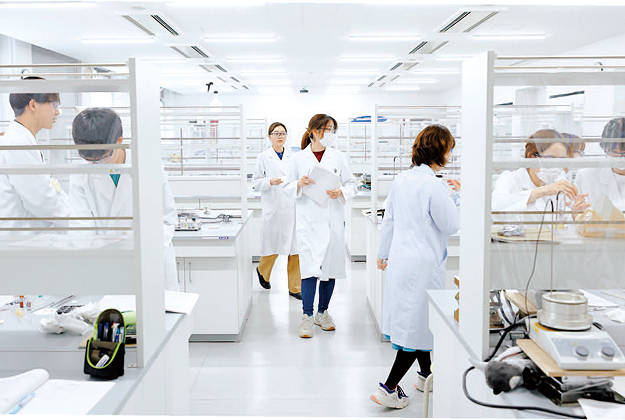 Experiments on organic qualitative analysis. Experiments are conducted in pairs in this exercise.
Experiments on organic qualitative analysis. Experiments are conducted in pairs in this exercise. -
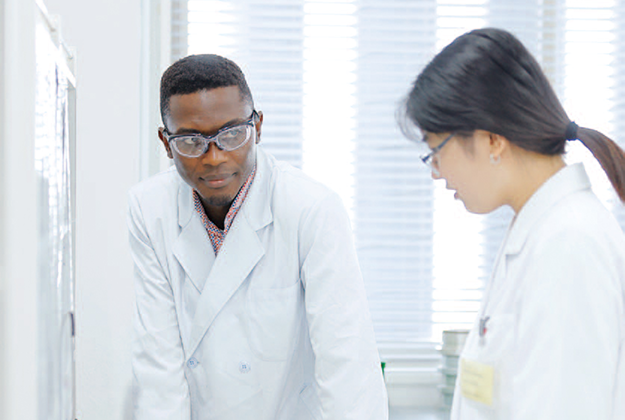 A teaching assistant (TA) is explaining thin layer chromatography (TLC).
A teaching assistant (TA) is explaining thin layer chromatography (TLC). -
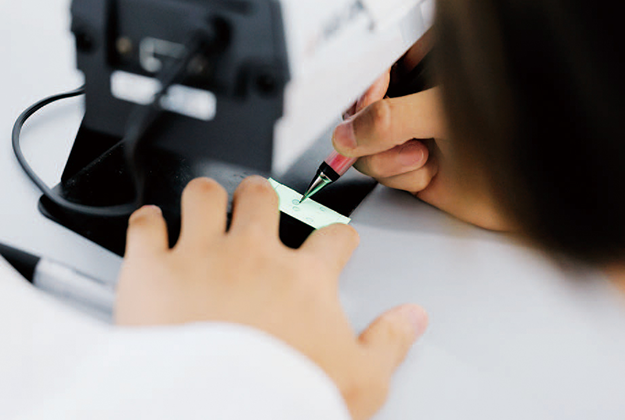 A TLC sheet is irradiated with UV light to outline the shape of the spot.
A TLC sheet is irradiated with UV light to outline the shape of the spot. -
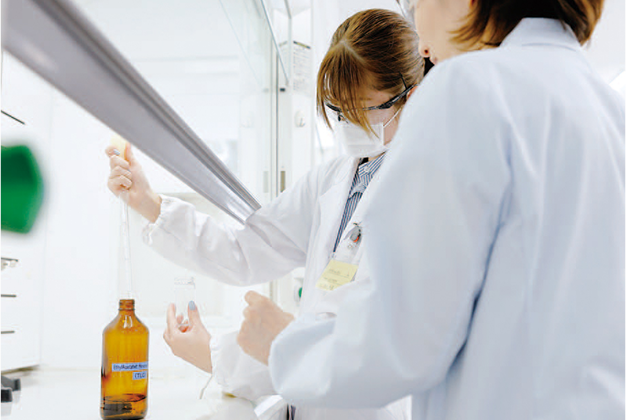 The instructor is explaining about developing solvents for TLC.
The instructor is explaining about developing solvents for TLC.
-
-
Physical Chemistry Laboratory
(Compulsory Elective Course in the Department of Materials and Life Sciences)In this experiment, students will learn basic methods of physical chemistry, how to use equipment, and methods of computational chemistry, and acquire advanced academic knowledge related to materials science and nanotechnology. Specifically, they will conduct experiments related to mass spectrometry, radiation measurements, and measurement of electronic and vibrational spectra from a microscopic point of view of the atomic and molecular levels. They will also learn the basics of gas chromatography as an example of instrumental analysis.-
 Explicit calculation using the Hückel method and the molecular orbital method.
Explicit calculation using the Hückel method and the molecular orbital method. -
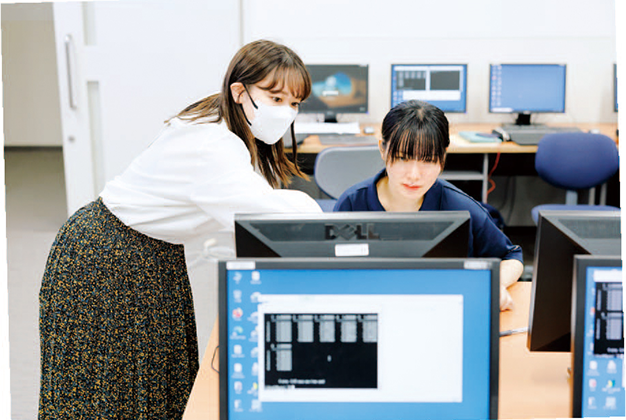 A graduate student is explaining in response to a question from undergraduate students.
A graduate student is explaining in response to a question from undergraduate students. -
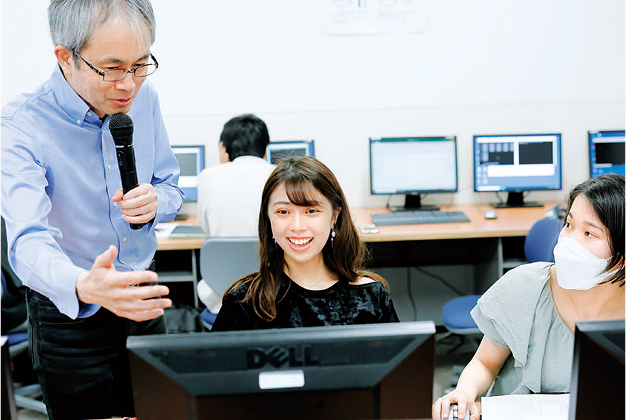 It is important to realize the physicochemical meaning of the results of theoretical calculation and to deepen the understanding through comparison with experimental results.
It is important to realize the physicochemical meaning of the results of theoretical calculation and to deepen the understanding through comparison with experimental results. -
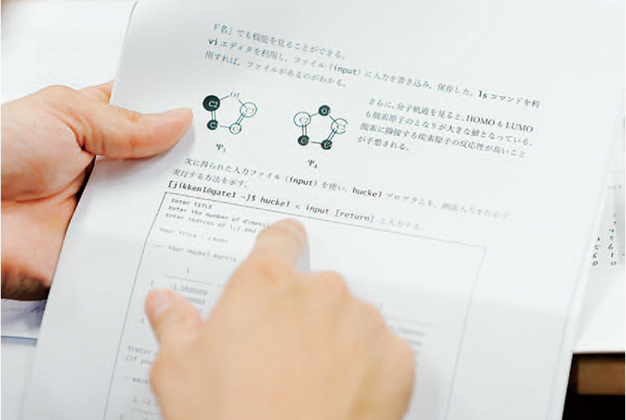 Linux is used as the computer operating system.
Linux is used as the computer operating system.
-
-
Materials and Life Sciences Laboratory A
(Compulsory Course in the Department of Materials and Life Sciences)This laboratory course is intended for first-year students of the Department of Materials and Life Sciences. The purpose is to acquire through experiments basic knowledge and concepts of chemistry that are essential for studying specialized courses (chemistry, biology, and physics). Experiments consist of those from a chemical perspective (wet analytical chemistry experiments) and those from a biological perspective (mainly microscopy). The instructor, the RAs, and the TAs will teach students how to handle reagents and equipment, safety measures in experiments, and how to write reports.-
 This experiment is being performed by each student independently and not in pairs.
This experiment is being performed by each student independently and not in pairs. -
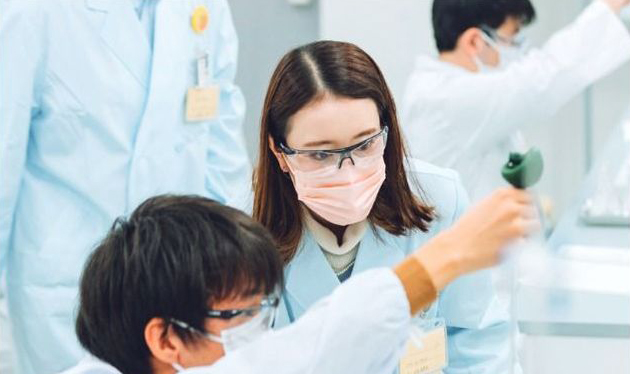 A TA (Teaching Assistant) is instructing a student how to use a volumetric pipette.
A TA (Teaching Assistant) is instructing a student how to use a volumetric pipette. -
 An instructor is teaching statistical calculations using a scientific calculator.
An instructor is teaching statistical calculations using a scientific calculator. -
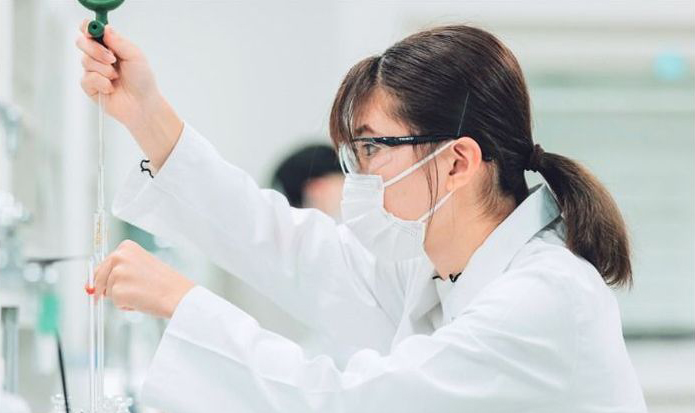 Can the student make a good alignment with the volume mark?
Can the student make a good alignment with the volume mark?
-
-
Materials and Life Sciences Laboratory C
(Compulsory Course in the Department of Materials and Life Sciences)The purpose of this course is to learn the basics through experiments, focusing on techniques and theories common to chemistry and physics. Students will learn physicochemical measurement methods and analytical methods, basic synthesis of and/or separation techniques for organic monomers and polymers, and measurement of physical properties. Then, they will acquire the basics of physical chemistry and organic chemistry and the techniques and theories necessary for in-depth understanding. They will also learn how these techniques and theories are used and applied in actual research activities and in society.-
 A TA is giving instructions on how to handle experimental data.
A TA is giving instructions on how to handle experimental data. -
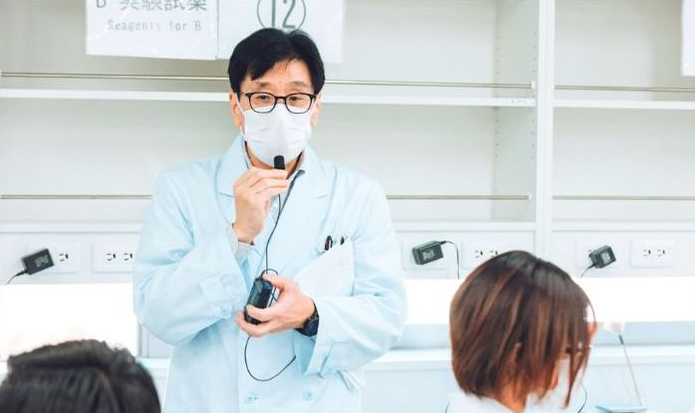 An instructor is explaining polymer synthesis and how to measure viscosity.
An instructor is explaining polymer synthesis and how to measure viscosity. -
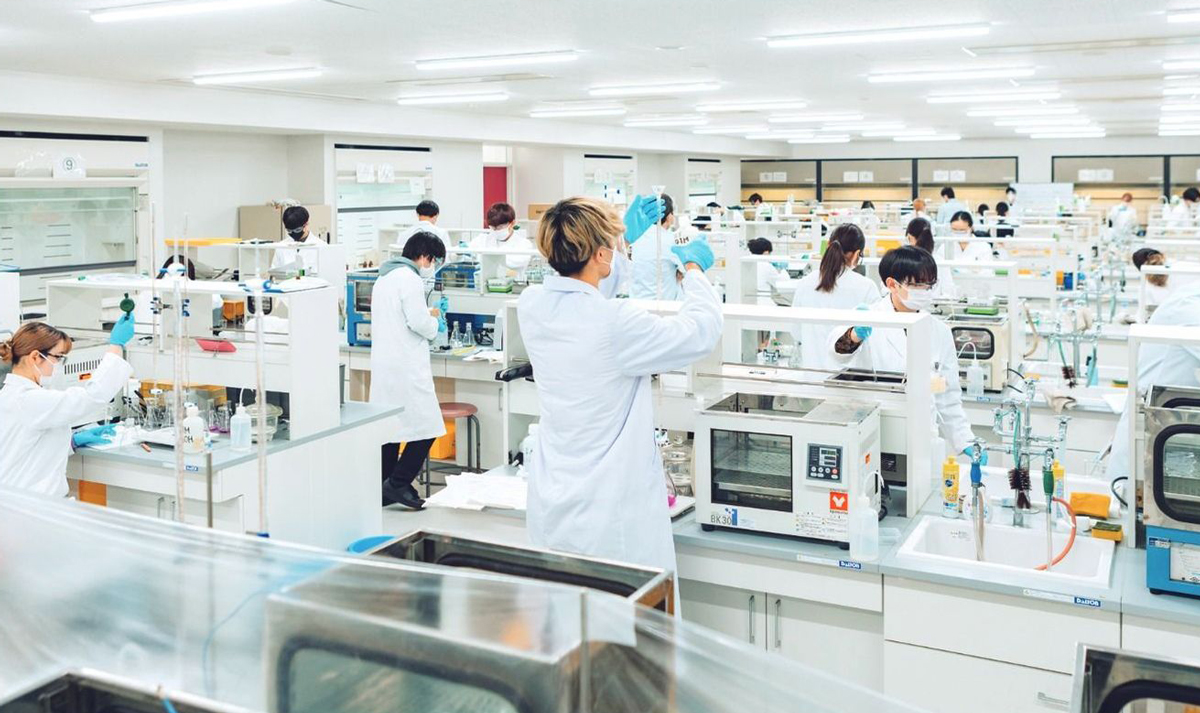 A large laboratory with a capacity of approximately 140 students is used.
A large laboratory with a capacity of approximately 140 students is used. -
 The student is measuring the hydrolysis rate of sucrose in the presence of hydrochloric acid.
The student is measuring the hydrolysis rate of sucrose in the presence of hydrochloric acid.
-










 Materials and Life Science
Materials and Life Science
 Engineering and Applied Sciences
Engineering and Applied Sciences
 Information and Communication Sciences
Information and Communication Sciences
